Text
Dolores Costello - The Goddess of the Silent Screen

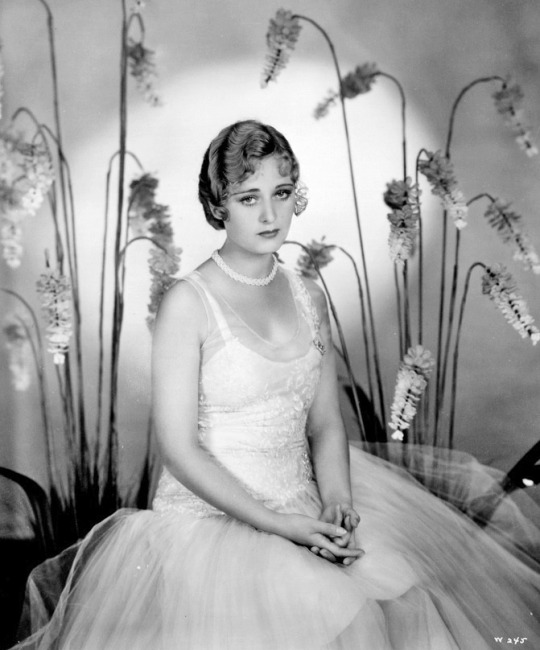
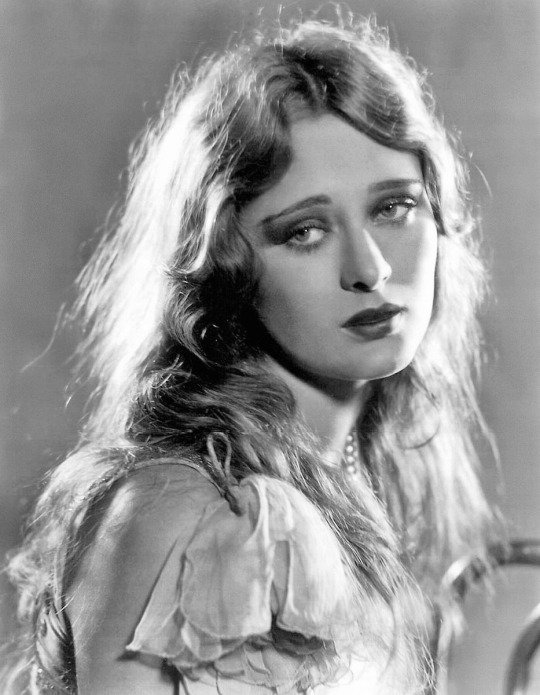
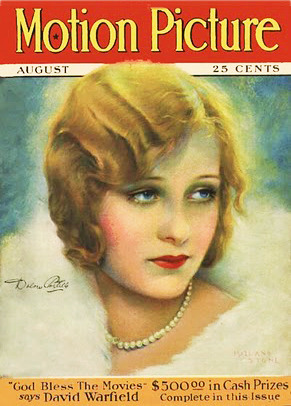


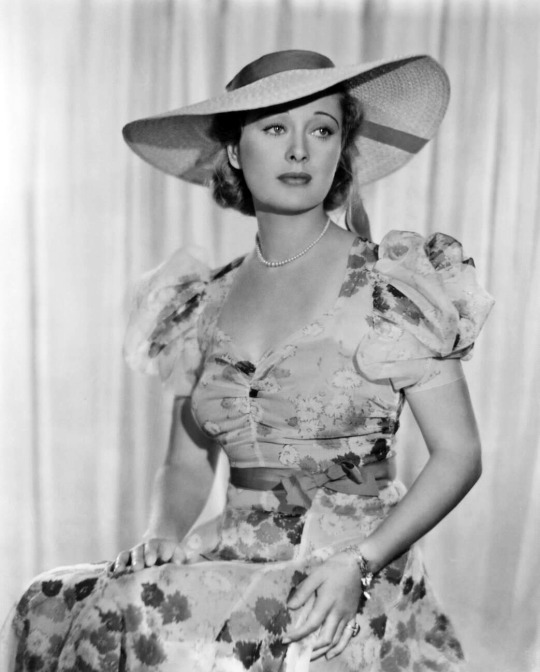





Dolores Costello (born in Pittsburgh, Pennsylvania on September 17, 1903 - March 1, 1979) was an American film actress who achieved her greatest success during the era of silent movies. Her silent film career developed to the degree that she had acquired the title, “The Goddess of the Silver Screen," for her delicate beauty.
The actress was the daughter of actors Mae Costello and Maurice Costello a leading matinee idol and early screen star. She had a younger sister, Helene, and the two made their early film appearances as child actresses for the Vitagraph Film Company. They then appeared on Broadway, which resulted in contracts with Warner Bros. Pictures in 1924.
In 1926, following small parts in feature films, Costello was handpicked to star with him in The Sea Beast, a loose adaptation of Herman Melville's Moby-Dick.
Her acting career became less a priority following the birth of her first child in 1930. She resumed her career in 1936, a year after her divorce and achieved some successes, most notably in The Magnificent Ambersons (1942). She retired permanently in 1943.
She died from emphysema in Fallbrook Hospital. She was 73 years old and had been living at her avocado farm in Fallbrook, California.
Legacy:
Named as one of the WAMPAS Baby Stars in 1926
Is the paternal grandmother of famous Hollywood actress, Drew Barrymore
Is the namesake of one half of America's most popular comedy duo, Abbot and Costello
Has had a star on the Hollywood Walk of Fame for her contributions to motion pictures at 1645 Vine Street in 1960

#Dolores Costello#Dolores Barrymore#The Goddess of the Silent Screen#John Barrymore#Drew Barrymore#Silent Films#Silent Movies#Silent Era#Silent Film Stars#Golden Age of Hollywood#Classic Hollywood#Film Classics#Classic Films#Old Hollywood#Vintage Hollywood#Hollywood#Movie Star#Hollywood Walk of Fame#Walk of Fame#Movie Legends#Actress#hollywood actresses#hollywood icons#hollywood legend#movie stars#1900s
4 notes
·
View notes
Text
Helen Hayes - First Lady of American Theater
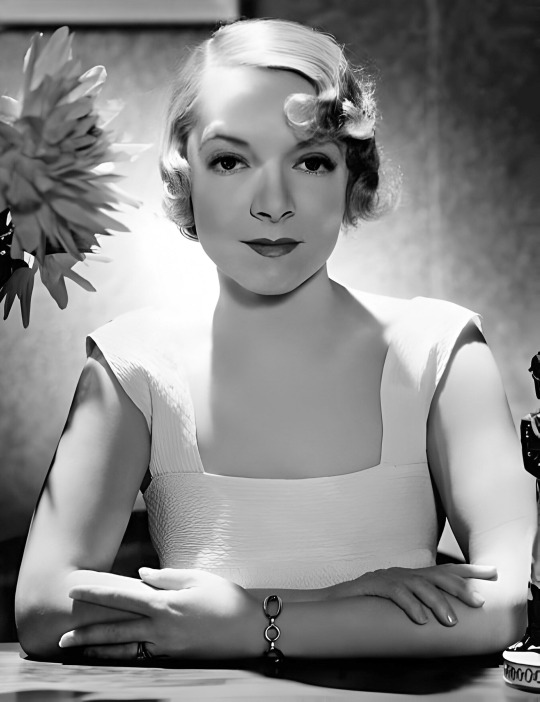



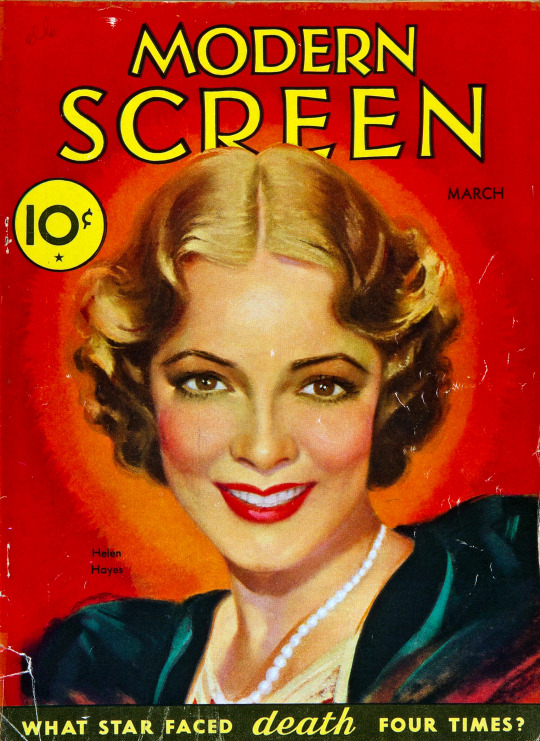
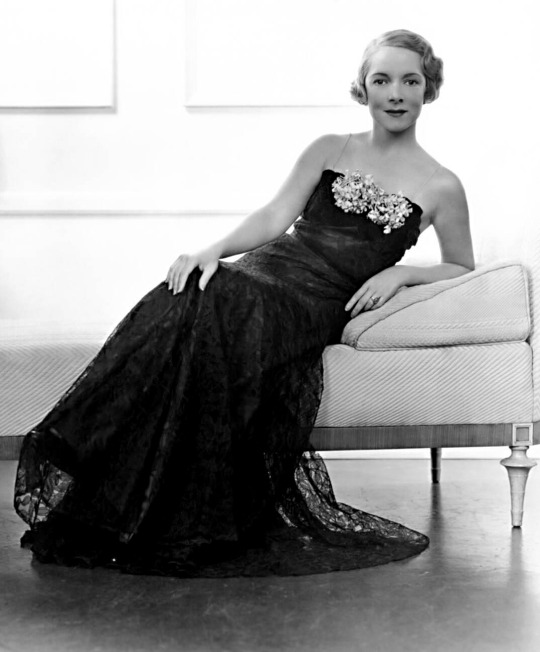

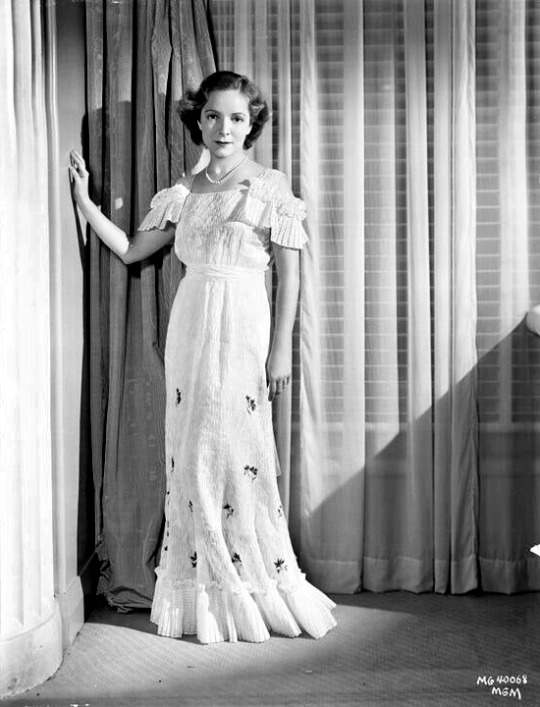




Helen Hayes MacArthur (born in Washington, D.C. on October 10, 1900 – March 17, 1993) was an American actress of Irish, Dutch, and English descent whose career spanned eighty-two years and regarded as the "First Lady of American Theatre."
Hayes made her stage debut at the age of five with her mother's encouragement. At age nine, she made her Broadway debut, and a year later, she was cast in the one-reel Vitagraph film.
She moved to Hollywood in 1931 when her husband became a screenwriter for Metro-Goldwyn-Mayer, where she also became a contract player. She made her film debut in The Sin of Madelon Claudet (1932), for which she received an Academy Award. Although she made a number of later films, within four years she returned to Broadway for the greatest success of her career: Gilbert Miller's production of Victoria Regina.
Hayes would return intermittently to Hollywood with featured roles in films, television, and radio, including a film comeback in disaster film Airport (1970), earning her a second Oscar. She retired in 1985 and spent her remaining years in her longtime home of Pretty Penny, in Nyack, New York, where she died of congestive heart failure at 92.
Legacy:
Was the first woman and second person to have won an Emmy, a Grammy, an Oscar, and a Tony Award (an EGOT).
Was also the first person to win the Triple Crown of Acting - the highest awards recognized in American film, television, and theater
Won two Academy Awards: Best Actress for The Sin of Madelon Claudet (1931) and Best Supporting Actress for Airport (1970)
Won one Primetime Emmy Award for Best Actress in 1953 and nominated for for nine more
Has three Tony Awards: two for Best Actress in a Play for Happy Birthday (1947) and Time Remembered (1958); and the Lawrence Langer Award for Distinguished Lifetime Achievement in the American Theatre
Won the Grammy Awards for Best Spoken Word Album for Great American Documents (1977)
Won the Distinguished Performance Award from the Drama League of New York Awards in 1936
Received the Presidential Medal of Freedom from President Ronald Reagan in 1986
Selected as one of 10 artists to be commemorated with the American Arts Commemorative Series gold medallions issued by the Treasury Department in 1980
Awarded the National Medal of Arts in 1988
Is one of the original inductees in the American Theatre Hall of Fame in 1972
Received the Golden Plate Award of the American Academy of Achievement in 1972
Inducted into the National Women's Hall of Fame in 1973
Won the Award for Greatest Public Service Benefiting the Disadvantaged, given annually by Jefferson Awards, in 1983
Honored with a US postage stamp in 2011
Has a Broadway theatre named after her: the Helen Hayes Theatre on 44th Street
Is the namesake for the annual Helen Hayes Awards, which has recognized excellence in professional theatre in Washington, D.C. since 1984
Served for 49 years on the Board of Visitors for the Helen Hayes Hospital, a physical rehabilitation hospital
Is a founding member of the Board of Advisors of the Riverside Shakespeare Company of New York City in 1981
Co-founded the National Wildflower Research Center in 1982 with Lady Bird Johnson
Wrote three memoirs: A Gift of Joy, On Reflection: An Autobiography, and My Life in Three Acts
Has had two stars on the Hollywood Walk of Fame since 1960: for motion pictures at 6258 Hollywood Boulevard, and for radio at 6549 Hollywood Boulevard

#Helen Hayes#First Lady of American Theater#The Sin of Madelon Claudet#Airport#Victoria Regina#Silent Films#Silent Movies#Silent Era#Silent Film Stars#Golden Age of Hollywood#Classic Hollywood#Film Classics#Classic Films#Old Hollywood#Vintage Hollywood#Hollywood#Movie Star#Hollywood Walk of Fame#Walk of Fame#Movie Legends#Actress#hollywood actresses#hollywood icons#hollywood legend#movie stars#1900s#Broadway
3 notes
·
View notes
Text
Mary Astor - The Cameo Girl

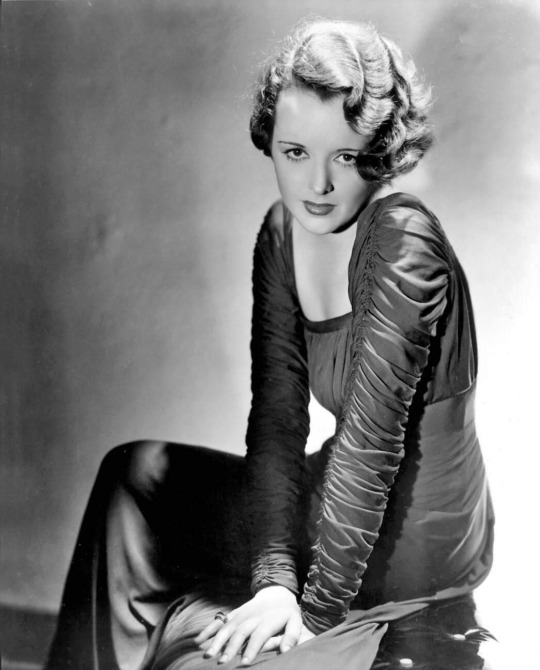


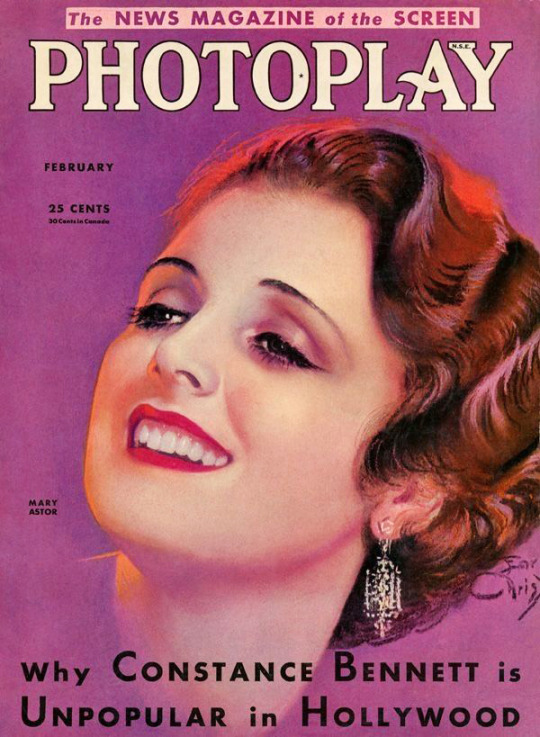
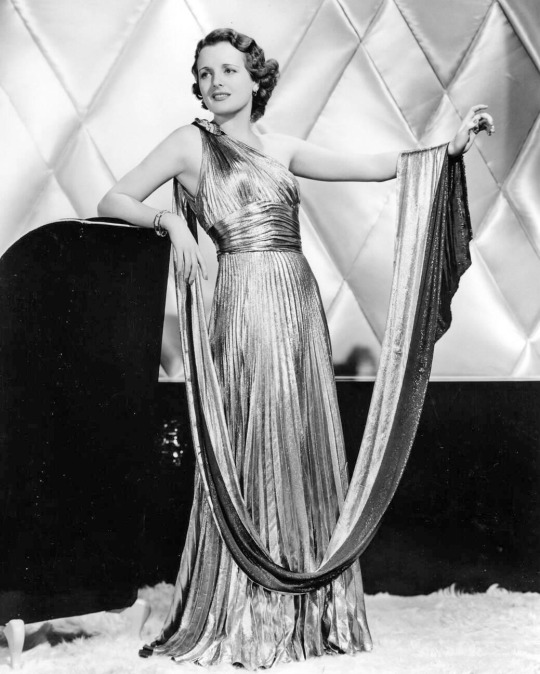
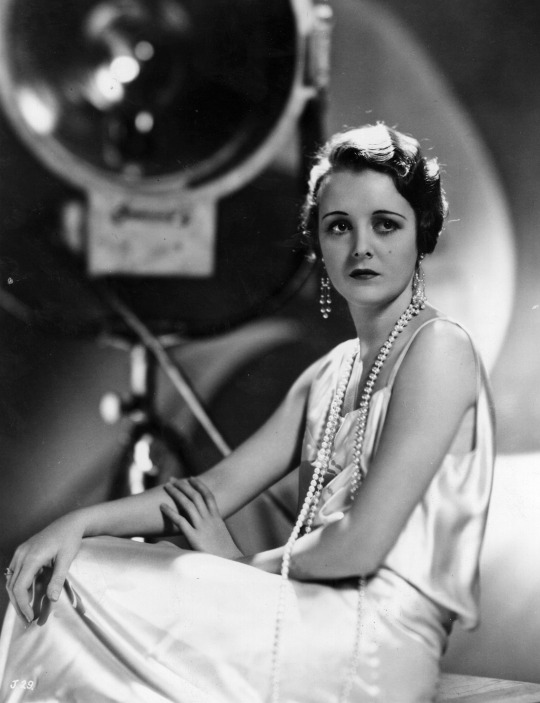




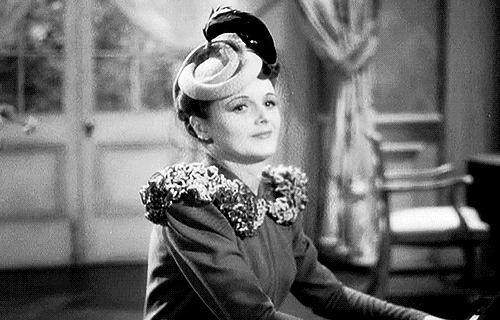
Mary Astor (born Lucile Vasconcellos Langhanke in Quincy, Illinois on May 3, 1906 – September 25, 1987) was an American actress of German and Portuguese ethnicity. Noted for her classic beauty and a renowned profile that earned her the nickname “The Cameo Girl.”
Recognizing her beauty, her parents pushed her into various beauty contests. Luck arrived when she became a runner-up in one of Motion Picture Magazine's photography contests and came to the attention of Harry Durant of Famous Players–Lasky, who signed her when she was 14.
Astor was a contract player first with Paramount, then Warner Bros., and finally Metro-Goldwyn-Mayer and worked in film, television, and on stage until her retirement in 1964. She also had a respectable career as a writer. Her 1959 autobiography Mary Astor: My Story was one of the first confessional autobiographies to come out of Hollywood.
Although her career spanned over four decades, she is best remembered for her performance as Brigid O'Shaughnessy in The Maltese Falcon (1941) and concert pianist Sandra Kovak in The Great Lie (1941).
After here retirement in 1964, Astor lived the final years of her life as a resident of the Motion Picture Country House in Woodland Hills, Los Angeles where she succumbed to the effects of respiratory failure due to pulmonary emphysema at the age of 81.
Legacy:
Chosen as one of the WAMPAS Baby Stars in 1926
Won the Academy Award for Best Supporting Actress in 1941
Authored two best-selling books of memoirs, Mary Astor: My Story (1959) and A Life on Film (1971) as well as five fictional novels.
Has had a star on the Hollywood Walk of Fame at 6701 Hollywood Boulevard since 1960.

#Mary Astor#The Cameo Girl#The Maltese Falcon#Silent Films#Silent Movies#Silent Era#Silent Film Stars#Golden Age of Hollywood#Classic Hollywood#Film Classics#Classic Films#Old Hollywood#Vintage Hollywood#Hollywood#Movie Star#Hollywood Walk of Fame#Walk of Fame#Movie Legends#Actress#hollywood actresses#hollywood icons#hollywood legend#movie stars#1900s
2 notes
·
View notes
Text

#Cover Page#Hollywood#old Hollywood#jewelry#jewellery#necklace#costume design#movies#movie#film classics#classic films#classic movies#classic Hollywood#15 Iconic Movie Necklaces from the 50s and the 60s
1 note
·
View note
Text
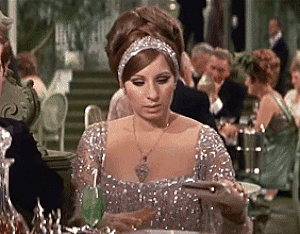
Movie: Funny Girl (1968)
Legendary Ziegfeld Follies star Fanny Brice (Barbra Streisand) surprises her boyfriend at dinner by proposing marriage to him while on a trip around Europe. To reflect the time period of the movie, she wears costume designer Irene Sharaff chooses an Art Deco long sleeved evening dress with a low cut bodice and empire style waist and an overlay of chiffon netting encrusted with sequins and rhinestones. She has a matching headband, clutch, and a turn-of-the-century lavalier necklace with old euro cut diamonds and rubies.
Barbra is renowned for buying her own pieces and is a fan of antique and vintage jewelry. For her roles in Funny Girl (1968) and Funny Lady (1975), the chosen jewelry revealed the changes in her character from one film to the next. In Funny Girl, Brice is striving to be a star, Barbra wears jewelry that is simple and streamlined, but in Funny Lady, she has “arrived” and can pull out the stops with her pieces.
For quite a number of her personal jewels used in the movies, it was reported that she shopped at the legendary Fred Leighton store in New York.

#Barbra Streisand#Barbra#Streisand#Funny Girl#Fanny Brice#Fred Leighton#Hollywood#old Hollywood#jewelry#jewellery#necklace#costume design#movies#movie#film classics#classic films#classic movies#classic Hollywood#rubies#ruby#Irene Sharaff#15 Iconic Movie Necklaces from the 50s and the 60s
4 notes
·
View notes
Text
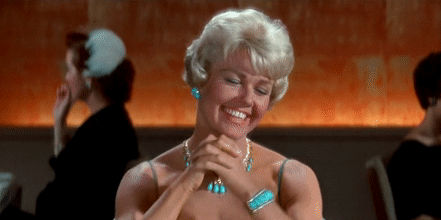
Movie: Pillow Talk (1959)
Jan Morrow (Doris Day), a successful interior decorator in New York City, goes on a date in a swanky restaurant while wearing an emerald green chiffon dress with a turquoise and diamond necklace, earrings, and bracelet set from Laykin et cie.
The producer wanted to transform Doris’ image from "the girl next door" to classy sex symbol, so famed designer Jean Louis was hired to do her wardrobe and Laykin et Cie lent $500k worth of jewels for her to wear.
The three-piece set was actually used twice in 1959. It was first worn by Lana Turner in Imitation of Life, another Universal Pictures production shot just before this movie. Lana’s wardrobe was also designed by Jean Louis and her jewels also provided by Laykin et cie.

#Doris Day#Jan Morrow#Pillow Talk#Doris and Rock#Hollywood#old Hollywood#jewelry#jewellery#necklace#costume design#movies#movie#film classics#classic films#classic movies#classic Hollywood#turqoise#Jean Louis#15 Iconic Movie Necklaces from the 50s and the 60s
3 notes
·
View notes
Text
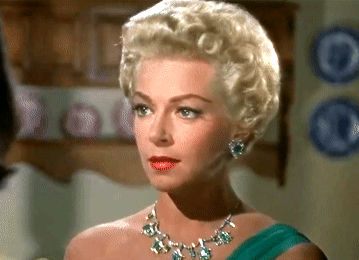
Movie: Imitation of Life (1959)
While hosting a dinner party in her home, glamourous Broadway star, Lora Meredith (Lana Turner), wears a beautiful white strapless dress with a green sash wrapped across the bodice and over one shoulder. It is accentuated with a dramatic Laykin et Cie emerald necklace set in platinum with matching earrings.
To appeal to the female audience at the time, the story was altered so that Lora is a Broadway actress so that Lana can model an array of stunning costumes and jewelry. In fact, she wears a $78k wardrobe all especially designed by Jean Louis.
The movie is also one of the first films to have a commercial tie-in with a jewelry company, and Laykin et Cie supplied all of the lavish pieces featured in the movie - $1m worth of costume jewelry.

#Lana Turner#Lora Meredith#Imitation of Life#hollywood#old Hollywood#jewelry#jewellery#necklace#costume design#movies#movie#film classics#classic films#classic movies#classic Hollywood#emeralds#emerald#Jean Louis#15 Iconic Movie Necklaces from the 50s and the 60s
1 note
·
View note
Text

Movie: Indiscreet (1958)
Anna Kalman (Ingrid Bergman), a famous London-based theater actress, attends a posh dinner for high-ranking financial officials. She wears a Dior scoop neck two-tone black dress with an impressive necklace that features two strips of diamonds interlocking in the middle around a large ruby, a design that is unconventional for the time period.
Christian Dior was in charge of Ingrid's entire wardrobe for the film, so it is not inconceivable that the necklace was provided by fashion house as well.
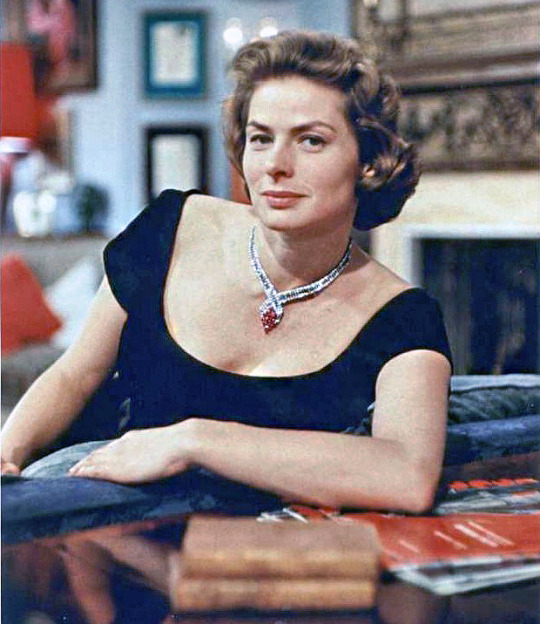
#Ingrid Bergman#Bergman#Anna Kalman#Indiscreet#Stanley Donen#Christian Dior#Dior#hollywood#old Hollywood#jewelry#jewellery#necklace#costume design#movies#movie#film classics#classic films#classic movies#classic Hollywood#rubies#ruby#15 Iconic Movie Necklaces from the 50s and the 60s
6 notes
·
View notes
Text
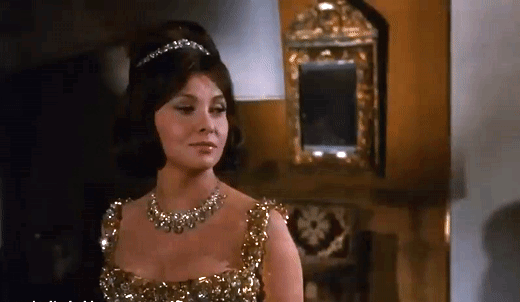
Movie: Woman of Straw (1964)
Maria Marcelo (Gina Lollobrigida), the former nurse and now wife of an old, ailing multi-millionaire, is dressed in a bejeweled gold Dior gown along with an exquisite a gold and diamond statement necklace for her wedding reception in Mallorca.
In fact, Gina is wearing two necklaces in this scene. The tiara she has on is actually a Bvlgari scroll-motif platinum diamond necklace, which she personally owns. Gina reportedly purchased almost all the jewelry she used in her movies, of which Bvlgari was her favourite.
The necklace in this scene may have been provided by Christian Dior since the designer provided all of Gina's wardrobe in the film or it may be from her own large personal collection, from which 22 pieces have been sold at Sotheby's The Jewelry Collection of Gina Lollobrigida from the Magnificent Jewels and Noble Jewels Auction in 2013 with proceeds going to stem cell research. Sadly, not much else is known about the necklace.

#Gina Lollobrigida#La Lollo#Maria Marcello#Woman of Straw#hollywood#old Hollywood#jewelry#jewellery#necklace#costume design#movies#movie#film classics#classic films#classic movies#classic Hollywood#diamonds#diamond#Christian Dior#Bvlgari#Bulgari#15 Iconic Movie Necklaces from the 50s and the 60s
4 notes
·
View notes
Text

Movie: The Band Wagon (1953)
New York's most sought-after ballerina, Gabrielle "Gaby" Gerard (Cyd Charisse), stars in her first Broadway musical production, and one of the most exciting parts of the play is the 12-minute “Girl Hunt Ballet” dance sequence, in which Gaby plays the seductive vamp in a red hot sequined dress with an art deco style diamond choker.
The necklace is most likely costume jewelry as many of the sketches of Mary Ann Nyberg, the film's costume designer, still exist, and they all include Cyd's accessories in the sketches. During the 1970 David Weisz Co. MGM Public Auction held at the famed studio's backlot, most of the movie's props and costumes were sold, which probably included this choker.

#Cyd Charisse#Charisse and Astaire#Cyd and Fred#Gaby Girard#Gabrielle Girard#Girl Hunt Ballet#The Band Wagon#Vincente Minnelli#hollywood#old Hollywood#jewelry#jewellery#necklace#costume design#movies#movie#film classics#classic films#classic movies#classic Hollywood#diamonds#diamond#choker#musical#musicals#Mary Ann Nyberg#15 Iconic Movie Necklaces from the 50s and the 60s
8 notes
·
View notes
Text

Movie: North by Northwest (1959)
While staying at the Ambassador Hotel in Chicago, Eve Kendall (Eva Marie Saint), an undercover agent gathering information on a criminal mastermind, entertains her guest in a red brocade floral dress with a Sabrina neckline to show off an elegant ruby tennis necklace from French jewelry company, Van Cleef & Arpels.
Alfred Hitchcock did not like the studio’s costume sketches for the character of Eve. As such, Eva's wardrobe for this movie was entirely shopped directly by the director himself off the models at Bergdorf Goodman.
Sadly, not much is known as to how much the necklace is worth, where the necklace is or who may own it at present.

#Eva Marie Saint#Eve Kendall#North by Northwest#Hitchcock#Alfred Hitchcock#hollywood#old Hollywood#jewelry#jewellery#necklace#costume design#movies#movie#film classics#classic films#classic movies#classic Hollywood#bergdorf goodman#ruby#rubies#Bergdorf Goodman#15 Iconic Movie Necklaces from the 50s and the 60s
3 notes
·
View notes
Text
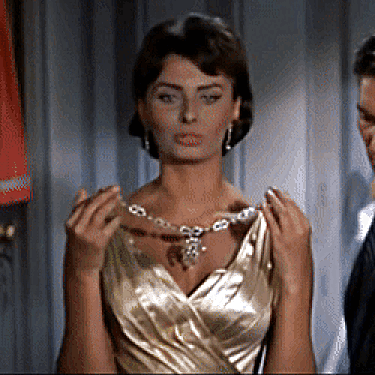
Movie: Houseboat (1958)
For the Sons of Italy Ball, Cinza Zaccardi (Sophia Loren), an Italian socialite on the run from her domineering father and masquerading as a housekeeper, wears the necklace her mother wore when her father proposed. The necklace is a statement piece set in gold and mounted with emeralds and diamonds, which is most likely from Bvlgari since Sophia is a loyal patron of the brand and thus, it features in many of her films.
The necklace is meant to contrast with all the pearl strands and simple gold and silver chains that all the other women at the party are wearing, signifying that she stands out - a literal diamond among the pebbles.
Whether the necklace was a loan to the film production or a part of Sophia's personal collection is not relevant as it is not known where it is currently. If it were personally owned by Sophia, it may have been part of Sophia's cache of stolen jewelry, most of which had been from Bvlgari and worth millions of dollars, from two thefts - the first at the Norwegian Barn in Elstree in 1960 and the second in her suite at the Sherry Netherland Hotel in New York in 1970.

#Sophia Loren#Sofia Loren#La Loren#Cinza Vaccardi#Houseboat#hollywood#old Hollywood#jewelry#jewellery#necklace#costume design#movies#movie#film classics#classic films#classic movies#classic Hollywood#emeralds#emerald#Bvlgari#Bulgari#15 Iconic Movie Necklaces from the 50s and the 60s
10 notes
·
View notes
Text

Movie: Splendor in the Grass (1961)
After two and a half years in a mental institution, Wilma Dean "Deanie" Loomis (Natalie Wood) returns home. She and her old high school friends drive to an old farmhouse to meet former high school sweetheart. Deanie sports an elegant and modern white dress with a wide brim hat and a simple, single strand pearl necklace - a reflection of her healing and acceptance of the modern, changing society and her place in it.
Anna Hill Johnstone, a frequent Elia Kazan collaborator, was the costume designer for the movie, and it is highly plausible that she chose or designed the necklace herself. There is no record of where the original movie necklace is currently.

#Natalie Wood#Wilma Dean Loomis#Deanie Loomis#Splendor in the Grass#Elia Kazan#hollywood#old Hollywood#jewelry#jewellery#necklace#costume design#movies#movie#film classics#classic films#classic movies#classic Hollywood#pearls#pearl#Anna Hill Johnstone#15 Iconic Movie Necklaces from the 50s and the 60s
5 notes
·
View notes
Text

Movie: The Barefoot Contessa (1954)
Movie star Maria Vargas (Ava Gardner) arrives at her movie's premiere with a Sorelle Fontana strapless green evening gown, white fur, and a matching simulated diamond and emerald drop necklace set in a sterling silver-plated ornate design created by Hobé et Cie.
Since Ava modelled for advertisements for the company, costume jewelry house Hobé et Cie provided jewelry for the film under the guidance of William Hobé, the son of French fine jeweler, Jacques Hobé.
Unfortunately, many of the vintage costume jewelry that Hobé et Cie created for Hollywood films have been lost through the years.

#Ava Gardner#Maria Vargas#The Barefoot Contessa#Barefoot Contessa#Joseph L. Mankiewicz#Mankiewicz#hollywood#old Hollywood#jewelry#jewellery#necklace#costume design#movies#movie#film classics#classic films#classic movies#classic Hollywood#emeralds#emerald#Hobe et Cie#Sorelle Fontana#15 Iconic Movie Necklaces from the 50s and the 60s
8 notes
·
View notes
Text

Movie: To Catch a Thief (1955)
Frances Stevens (Grace Kelly), a daughter of an oil millionaire, invites a former jewel thief known as "The Cat" to her room at the Carlton Hotel in Cannes to watch a fireworks display while intentionally tempting him to steal her mother's tiered diamond bib necklace, which is exposed as a fake shortly after.
The necklace was a costume piece carefully chosen by Edith Head, the film's costume designer, and rented from Joseff of Hollywood at a total cost of $75.
The necklace has been lost throughout the years; it is not in the Joseff of Hollywood Burbank warehouse, nor is it included Treasures from the Vault of Joseff of Hollywood collection, a 2017 special live auction held by Julien's Auctions.

#Grace Kelly#Princess Grace of Monaco#Princess Grace#Grace of Monaco#Frances Stevens#To Catch a Thief#Alfred Hitchcock#Hitchcock#Joseff of Hollywood#costume jewelry#hollywood#old Hollywood#jewelry#jewellery#necklace#costume design#movies#movie#film classics#classic films#classic movies#classic Hollywood#diamonds#diamond#Edith Head#15 Iconic Movie Necklaces from the 50s and the 60s
5 notes
·
View notes
Text

Movie: Cat On A Hot Tin Roof (1958)
Throughout the entirety of the film, a simple gold necklace with a dainty heart-shaped pendant is a staple of Margaret "Maggie the Cat" Pollitt (Elizabeth Taylor). The understated glam of the pendant and the simple elegance of her costumes designed by Helen Rose allows Elizabeth's performance to really shine through, especially since she is known for flaunting her legendary jewelry collection.
Her real-life third husband, film producer Mike Todd, had the necklace made for Elizabeth, along with an identical one for his mother, as a Valentine's Day gift. Elizabeth was photographed wearing it on February 12, 1958 during a press trip to Europe and the 1958 Golden Globe Awards.
The sentiment Elizabeth felt for the necklace was clearly attached to the fact that she received it shortly before Mike died in a plane crash on March 22, 1958. She wore the necklace constantly for almost two years after he died, including his funeral, her wedding to Eddie Fisher and as part of her costume in Suddenly, Last Summer (1959). It wasn’t until 1960 when Taylor landed on the set of Cleopatra (1963) in Rome that the necklace became less of a mainstay in her daily jewels.
Not much is known about the necklace's current location, but Elizabeth may have bequeathed it in her will, just as her former mother-in-law passed it down to her granddaughter, Liza Todd, Elizabeth's only daughter with Mike Todd since it is not part of any of the auctions to benefit the Elizabeth Taylor AIDS Foundation throughout the years as well as the Christie's live auction, The Collection of Elizabeth Taylor: The Legendary Jewels after her passing.

#Elizabeth Taylor#Liz Taylor#Liz#Margaret Pollitt#Maggie the Cat#Cat on a Hot Tin Roof#Mike Todd#hollywood#old Hollywood#jewelry#jewellery#necklace#costume design#movies#movie#film classics#classic films#classic movies#classic Hollywood#gold necklace#Helen Rose#15 Iconic Movie Necklaces from the 50s and the 60s
47 notes
·
View notes
Text

Movie: Vertigo (1958)
While on a date with her new beau, Judy Barton (Kim Novak), a department store salesgirl, wears a Spanish-style ruby drop pendant surrounded by smaller diamonds with three matching teardrop rubies hanging from the base. It is an old family heirloom of wealthy socialite, Madeleine Elster, who Judy impersonated three years ago and becomes the telltale clue to the movie's mystery.
We first see Carlotta's necklace, as it is fondly called by fans of the movie, in a painting, Portrait of Carlotta, at the Legion of Honor art museum. The painting is of Carlotta Valdes, Madeleine's great-grandmother who was mistress of a wealthy married man and committed suicide in 1855.
Edith Head's costume designs for Kim in Vertigo are arguably some of the most important costumes in film history since the film revolves around the idea of identity and appearance with Kim playing dual characters. Madeleine and Judy are defined by their sharply differing styles: one sophisticated and urbane, the other earthy and more vibrant. Sadly, the whereabouts and the designer of the original movie necklace are unknown.

#Kim Novak#Judy Barton#Madeleine Elster#Vertigo#Alfred Hitchcock#Hitchcock#Carlotta Valdes#costume jewelry#Carlotta's Necklace#hollywood#old Hollywood#jewelry#jewellery#necklace#rubies#costume design#movies#movie#film classics#classic films#classic movies#classic hollywood#Edith Head#15 Iconic Movie Necklaces from the 50s and the 60s
3 notes
·
View notes